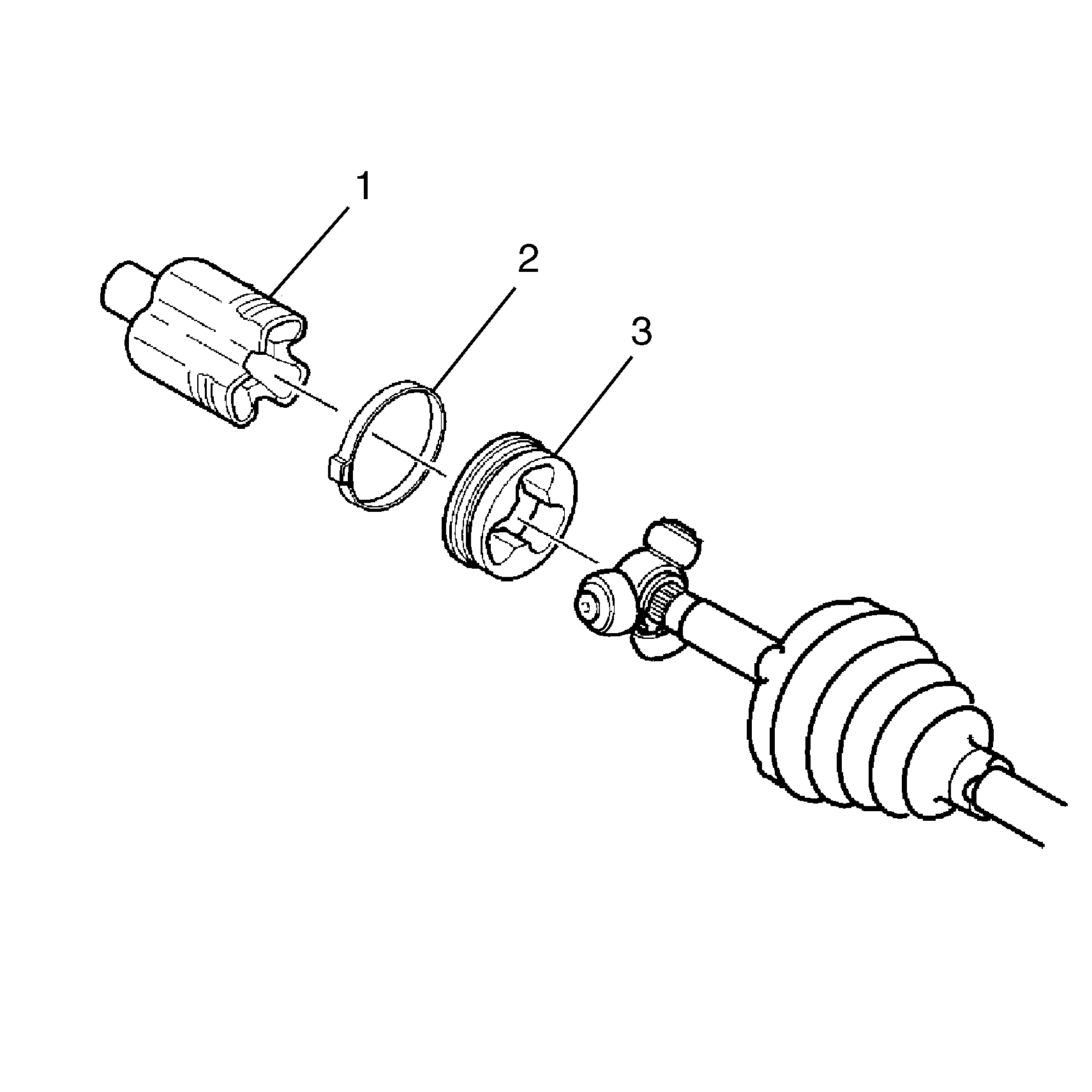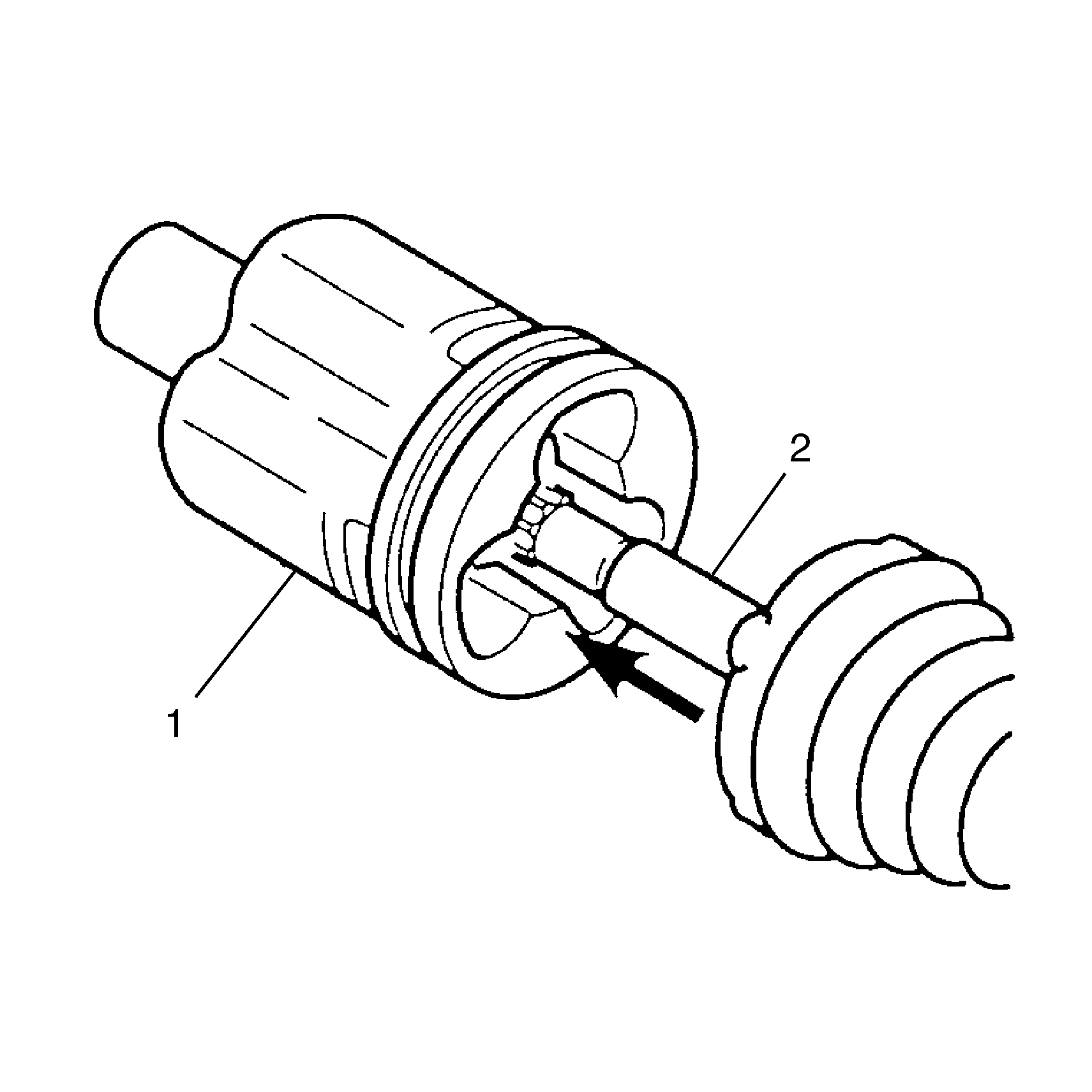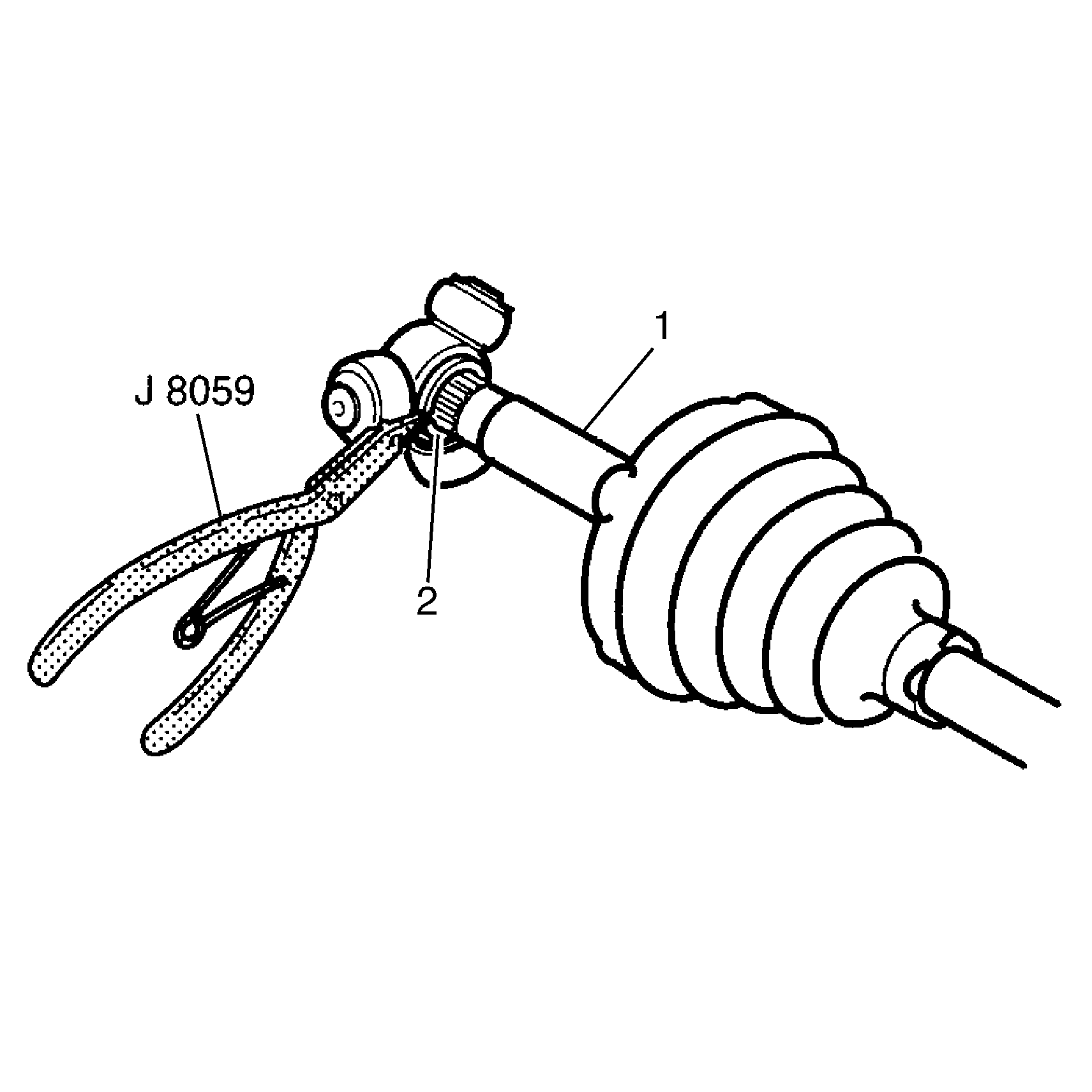
- Install the new swage
ring (2) on the neck of the new inboard seal (1). Do not swage.
- Slide the halfshaft inboard seal (1) onto the halfshaft
bar.
- Position the neck of the halfshaft inboard seal (1) in
the seal groove (3) on the halfshaft bar.
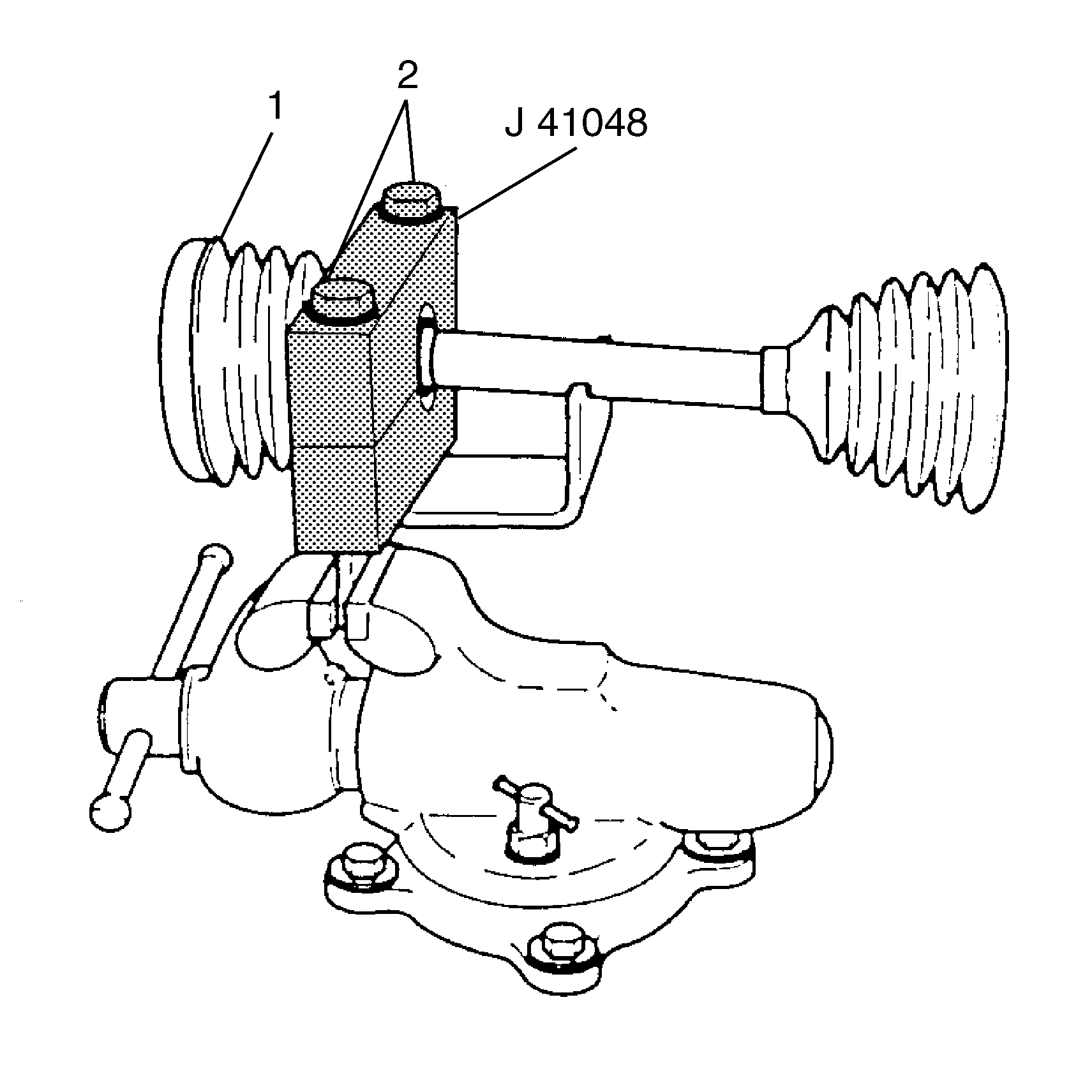
- Position the inboard end
of the halfshaft assembly (1) using
J 41048
.
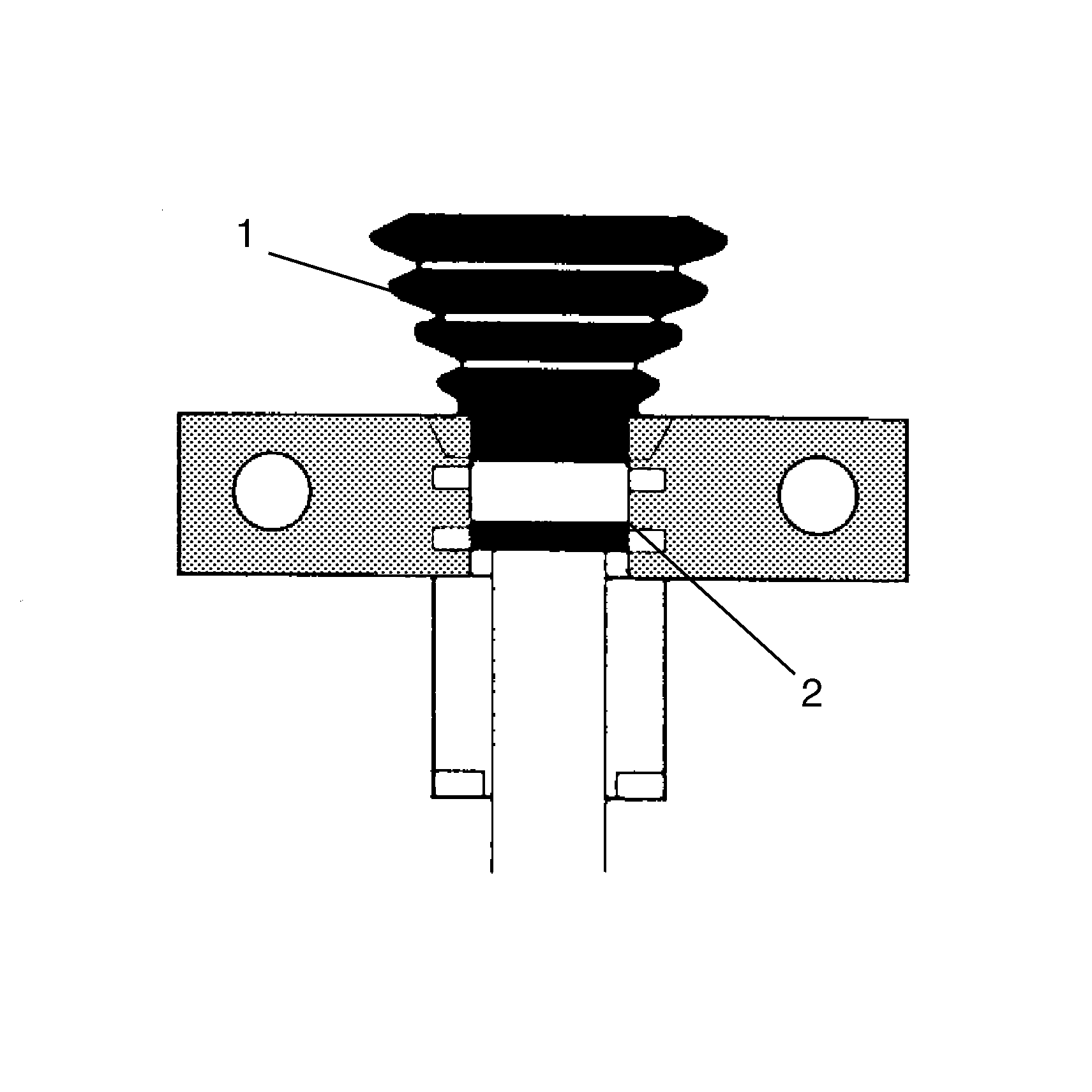
Notice: Do not cut through the wheel drive shaft inboard or outboard boot during service. Cutting through the boot may damage the sealing surface of the housing and the tripot or the constant velocity joint bushing. Damage
to the sealing surface may lead to water and dirt intrusion and premature wear of the constant velocity joint.
- Align the swage ring (2) by performing the following
steps:
| | Important: Align the following items:
|
Notice: Use the correct fastener in the correct location. Replacement fasteners
must be the correct part number for that application. Fasteners requiring
replacement or fasteners requiring the use of thread locking compound or sealant
are identified in the service procedure. Do not use paints, lubricants, or
corrosion inhibitors on fasteners or fastener joint surfaces unless specified.
These coatings affect fastener torque and joint clamping force and may damage
the fastener. Use the correct tightening sequence and specifications when
installing fasteners in order to avoid damage to parts and systems.
| 5.3. | Tighten the bolts by hand until snug. |
Tighten
Tighten each bolt 180 degrees at a time using a ratchet wrench.
Alternate between each bolt until both sides are bottomed.
| 5.6. | Check the swage ring (2) for any "lip" deformities.
If present, place the ring (2) back into the
J 41048
ensuring the swage ring (2) covers
the whole swaging area. |
| 5.7. | Re-swage the swage ring (2). |
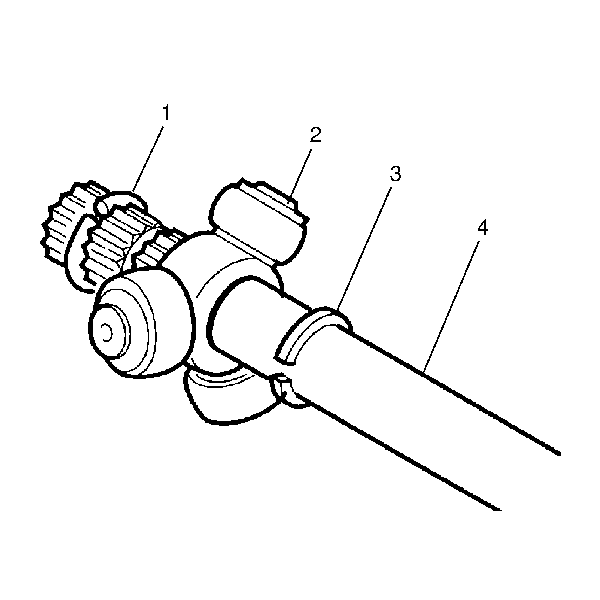
- Install the spacer ring (3)
on the halfshaft bar (4) and beyond the second groove.
- Slide the tripot joint spider assembly (2) toward the spacer
ring (3) as far as it will go on the halfshaft bar (4).
- Install the halfshaft bar retaining ring (1) in the groove
of the halfshaft bar (4) using
J 8059
.
- Slide the tripot joint spider assembly (2) towards the
end of the halfshaft bar (4).
- Reseat the spacer ring (1) in the groove on the halfshaft
bar (4).
- Place approximately half of the grease from the service kit in
the inboard seal. Use the remainder of the grease to repack the housing.
- Install the trilobal tripot bushing to housing. Ensure the trilobal
tripot bushing is flush with the face of the housing.
- Position the larger new clamp on the inboard seal.
- Slide the housing over the tripot joint spider assembly on the
halfshaft bar.
- Slide the large diameter of the inboard seal, with the larger
clamp in place, over the outside of the trilobal tripot bushing and locate
the lip of the seal in the groove.

Important: The inboard seal (2) must not be dimpled, stretched out or out
of shape in any way. If the inboard seal (2) is not shaped correctly,
carefully insert a thin flat blunt tool (no sharp edges) between the large
seal opening and the trilobal tripot bushing to equalize the pressure. Shape
the inboard seal properly by hand. Remove the tool.
- Position the joint assembly at the proper vehicle dimension (dimension a= 105 mm (4
in)).
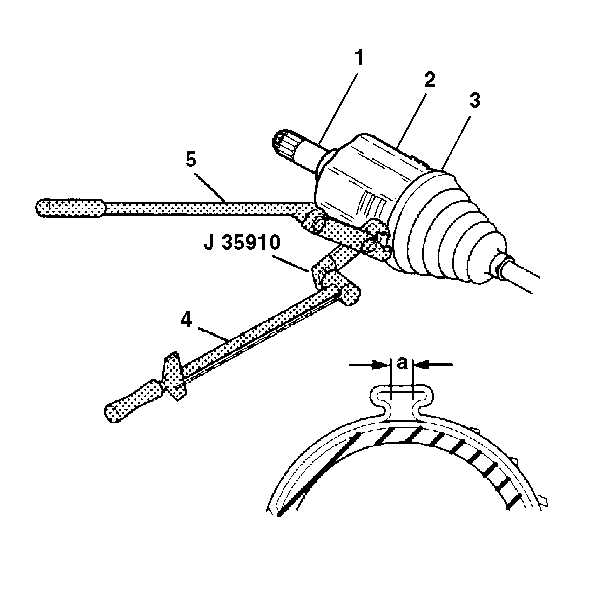
Important: Align the following items while latching:
| • | The large seal retaining clamp (3) |
- Crimp the seal retaining clamp (3) with
J 35910
.
Tighten
Crimp the clamp (3) to 174 N·m (130 lb ft).
- Check the gap dimension on the clamp ear. Continue tightening
until the gap dimension is reached (dimension a= 2.3 mm (3/32
in) maximum).
